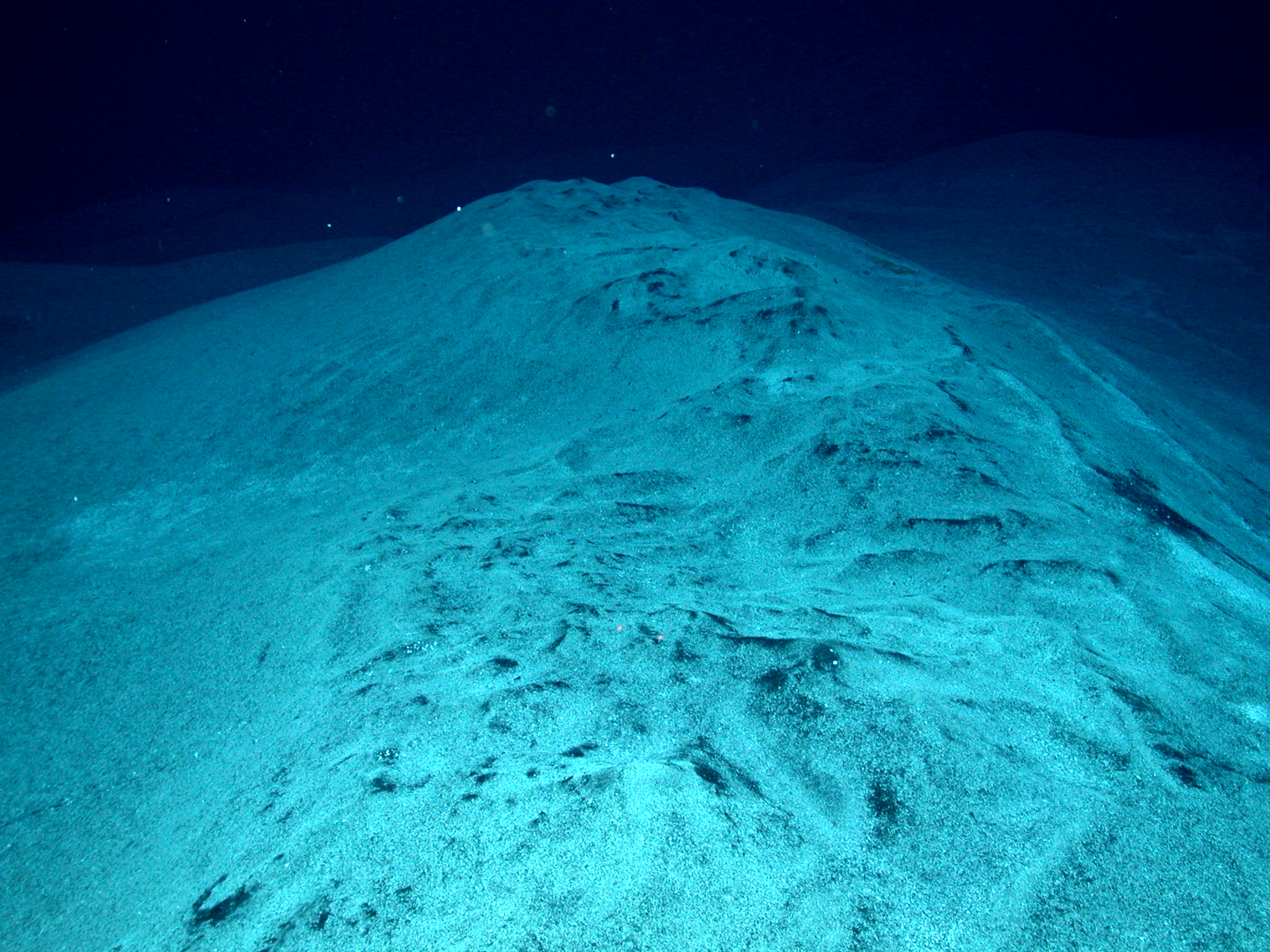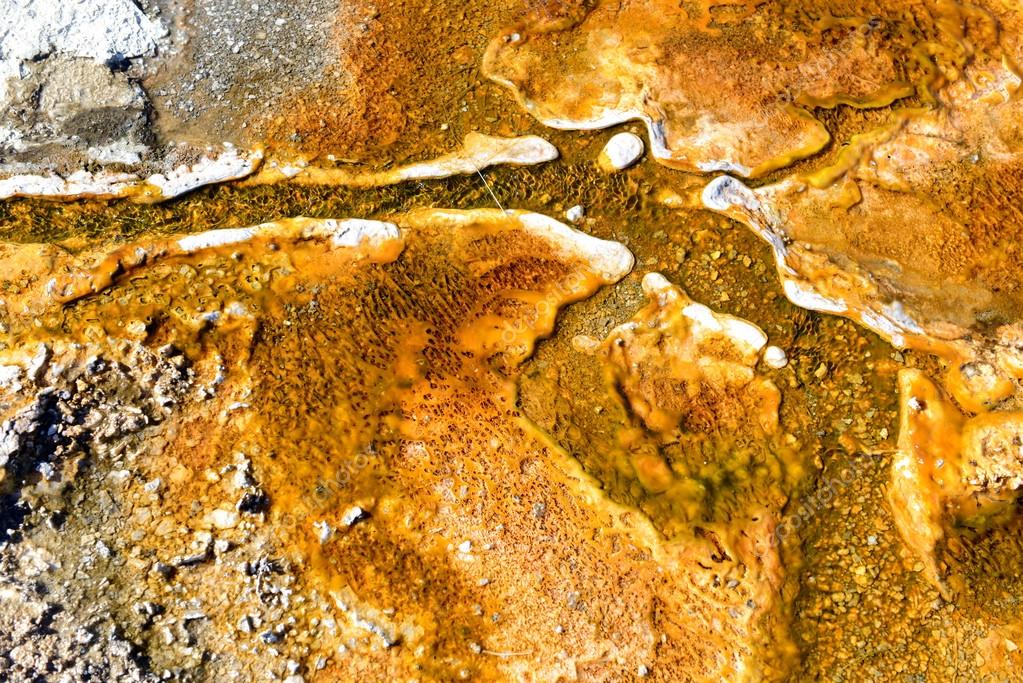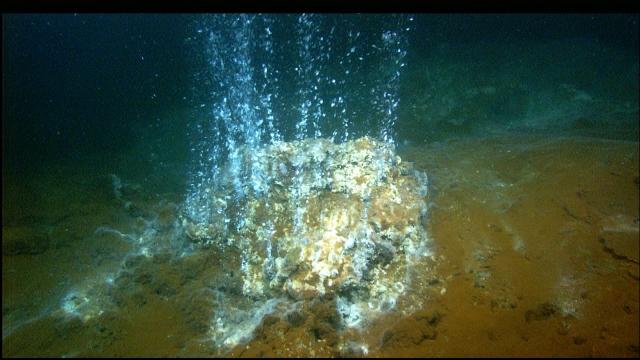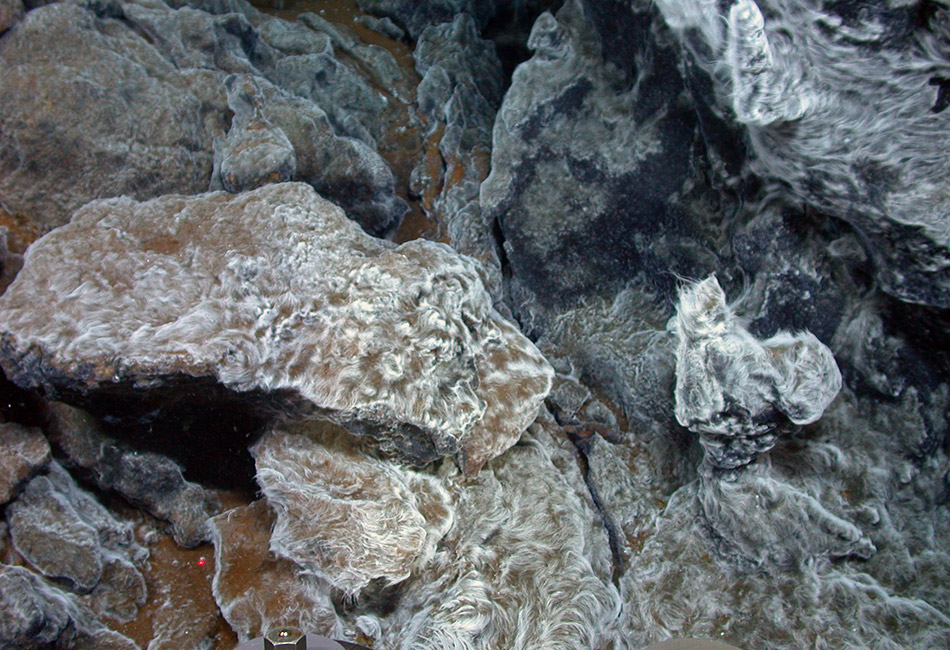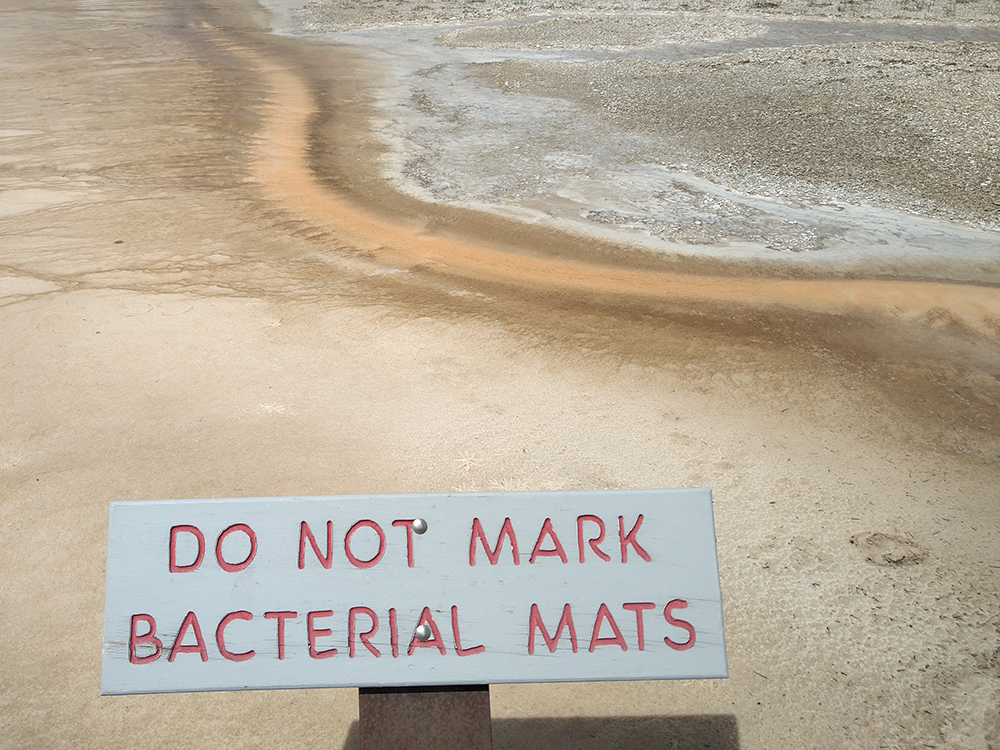Bacteria Mats At Vents

Bottom feeders like limpets graze on microbial mats up to three centimeters thick and suspension feeders like mussels feed on bacteria floating in the water.
Bacteria mats at vents. Perhaps the oddest and toughest bacteria at vents are the heat loving thermophiles temperatures well above 662 f 350 c are not uncommon at vents. A microbial mat is a multi layered sheet of microorganisms mainly bacteria and archaea and also just bacterial microbial mats grow at interfaces between different types of material mostly on submerged or moist surfaces but a few survive in deserts. Hydrothermal vents emit nutrient rich geothermally heated water. They colonize environments ranging in temperature from 40 c to 120 c.
Slimy orange mats of microbes grow at grand prismatic spring in yellowstone national park. Bacterial mats have been observed on the surface at many hydrothermal sites 17 18. Rocks the seafloor even the inside of animals like mussels. The hydrothermal vent microbial community includes all unicellular organisms that live and reproduce in a chemically distinct area around hydrothermal vents these include organisms in the microbial mat free floating cells or bacteria in an endosymbiotic relationship with animals.
The bacterial mats are grazed by other microorganisms such as amphipods and copepods these provide for a food web containing other animals including limpets shrimp crabs. Comparison of neutrophilic fe oxidizer isolate genomes has revealed a hypothetical fe oxidation pathway featuring a homolog of the fe oxidase cyc2 from acidithiobacillus ferrooxidans. Bacteria at hydrothermal vents inhabit almost everything. Whitish bacterial mats similar in morphology to those described here reportedly cover substrata in the vicinity of vents at the guaymas basin.
White mat of bacteria the chemosynthetic bacteria are found as large thick mats or living in symbiotic relationships with vent animals such as tube worms and giant clams. On earth from yellowstone s hot pools to the volcanic vents of the deep sea. Many species of crabs worms snails and tube worms depend on these bacterial mats for food. Chemolithoautotrophic bacteria derive nutrients and energy from the geological activity at hydrothermal vents to.
A few are found as endosymbionts of animals. The prolific bacteria which covered thousands of. These fissures and pits were lined with white mats of a unique fast growing bacteria that was the only life associated with the brand new vents. All are living under extreme pressure and temperature changes.
Mats of chemosynthetic bacteria grow around the vents and synthesize carbohydrates from the carbon dioxide ejected by the vent.

